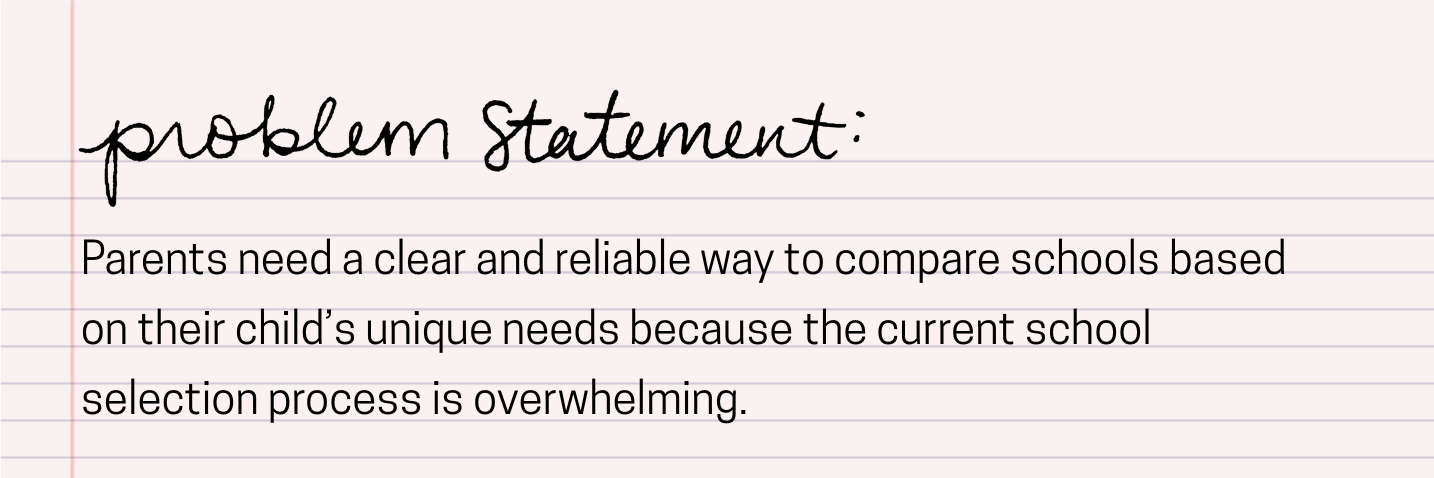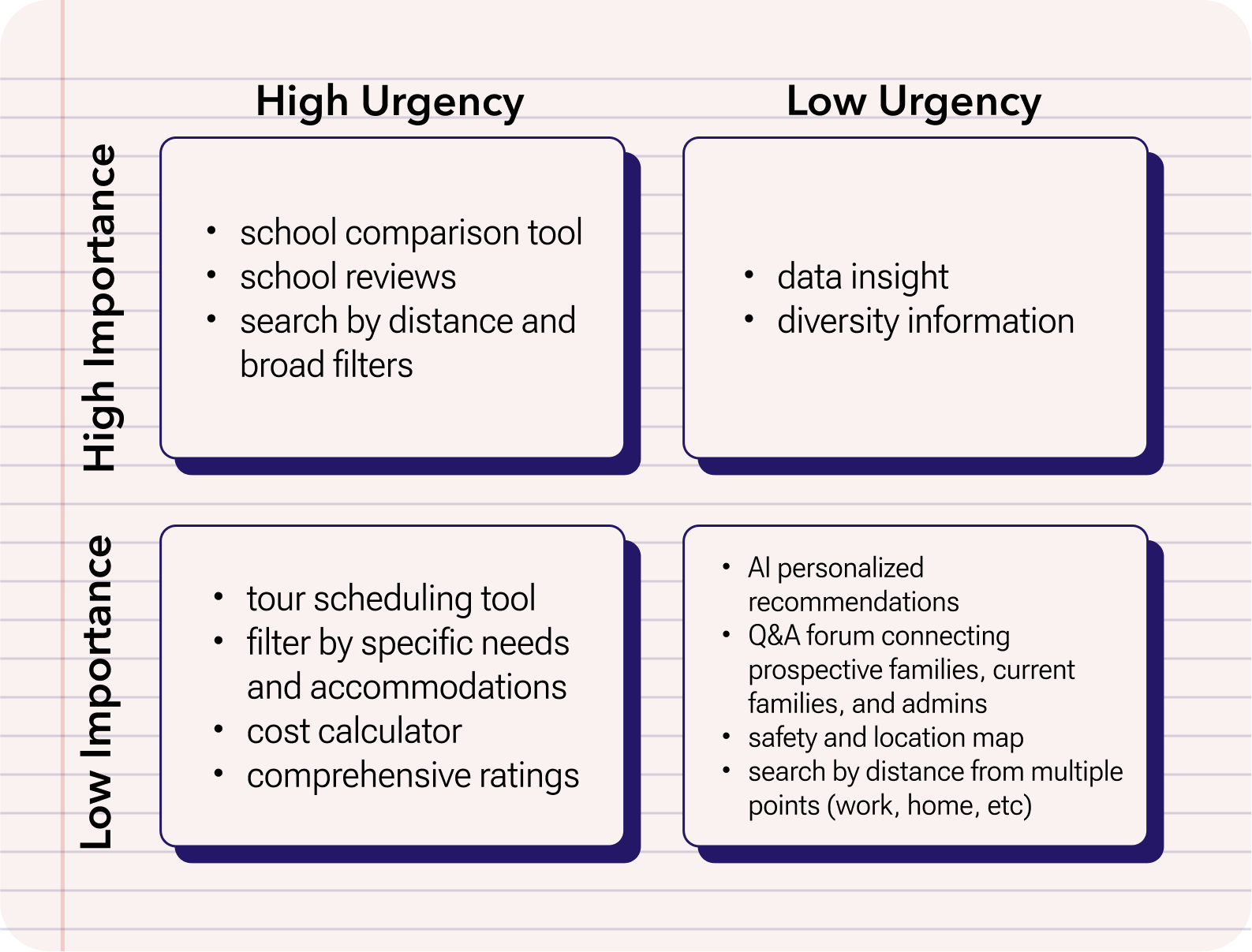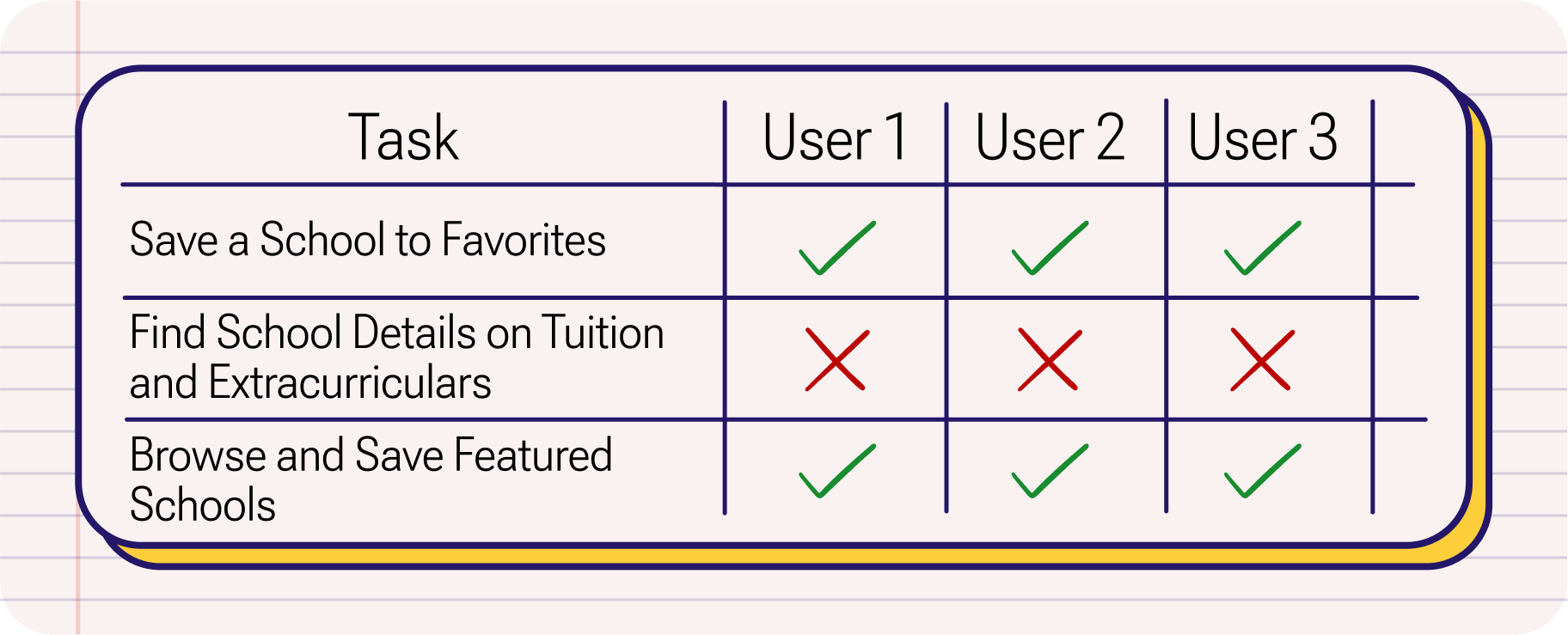THE SCHOOL LIST
For this assignment, I designed an app to simplify the school selection process for parents. Parent interviews from OurKids.com revealed two major pain points: sorting through too much information while racing against application deadlines.
This case study outlines my approach to synthesizing user research, prioritizing essential features, and refining the design based on usability feedback. The result is a tool that empowers parents to focus on what matters: choosing a school that supports their child’s unique needs, without the stress of competing deadlines and excess information.
To design a tool that actually makes school decision-making easier for parents- not more overwhelming.
The app needed to feel approachable while still offering depth: think side-by-side comparisons, honest user reviews, and smart search filters that let families prioritize what matters most, whether that's academics, safety, or after-school programs. Through rounds of testing and iteration, the design evolved to meet a wider range of needs and user paths, ultimately helping parents make confident, informed choices that feel right for their kids and their lives.
The Goal:
Using Parent Interviews to Drive User-Focused Design
To understand the challenges parents face in choosing schools, I combed through in-depth interviews with six parents, each with unique priorities ranging from academic rigor to special accommodations, conducted by OurKids.com. These interviews were essential in identifying the diversity of their needs, and highlighted the importance of building features that could adapt to a diverse range of requirements.
From those interviews, I identified several criteria that parents prioritized in their school search—such as class size, extracurricular offerings, and safety measures—and began brainstorming potential features. Using an Eisenhower Matrix, I was able to prioritize features that would provide the highest impact with the least complexity. This approach allowed room for future growth and expansion as the app evolves, while keeping the initial design streamlined and user-focused for effective MVP delivery.
Rapid Ideation to Refined Navigation
I began the prototyping process with Crazy 8’s sketches for each critical feature identified in my Eisenhower Matrix. From these sketches, I selected the most promising concepts and refined them into cohesive screens. This led to a task flow of screens that aligned visually and functionally, forming the basis of my low-fidelity wireframe.
Uncovering Usability Gaps and Applying Iterative Improvements
Usability testing revealed that my initial assumptions about task flows didn’t align with the path users took. I had expected users to follow a specific flow, but they interacted with the prototype differently. This gap highlighted the importance of iterative testing and challenged me to broaden my perspective to accommodate various user approaches within the app’s design.
One major improvement came from redesigning the app’s navigation. Initially, the menu included four icons that weren’t intuitive for users, leading to confusion. After testing, I refined the menu by adding labels and repositioning the search function within the schools page, where it was most relevant. This iteration made navigation simpler and allowed space for a dedicated profile page.
Empowering Parents With a Tool Built on Real Feedback
Throughout this project, I learned that assumptions and bias can easily shape design choices but must be challenged through user testing. The iterations allowed me to refine the design in ways that better fit users’ natural navigation paths. Each iteration brought the app closer to an intuitive experience for parents.
Although this project was an exercise, the design for Better School Choice is a testament to the value of user-centered design. Moving forward, I envision a moderated forum to foster even greater community among parents, enabling them to discuss topics like academic programs or school values. This project reinforced my commitment to designing tools that truly support user needs, creating solutions that make a tangible difference.








